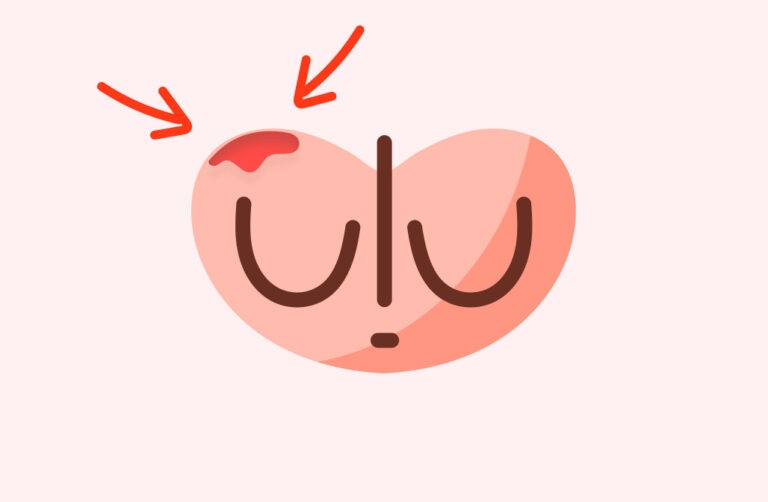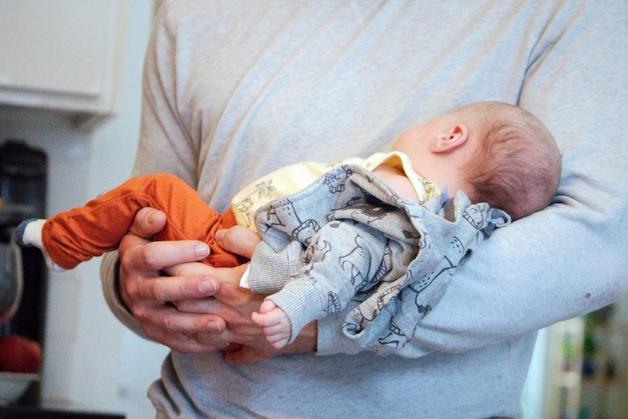Bringing a newborn home is a step into the unknown — days and nights filled with feeding, soothing, and a thousand tiny gestures that knit a parent and child together. One behaviour that often intrigues parents, especially during those early weeks, is the rooting reflex. Why does your baby turn their head with such precision when your hand brushes their cheek? Will this reflex always be there, or might it fade? Can its absence signal something not quite right? The answers, both simple and layered, blend the wonders of neurology, instinct, and care. Dive deeper to discover how the rooting reflex, the interplay of nerves and instinct, and the signs your baby gives can offer both reassurance and guidance as your little one begins learning the world.
Rooting Reflex: Understanding the First Steps in Feeding
Nature has a way of ensuring that even the tiniest newborn is equipped to seek nourishment from the moment of arrival. The rooting reflex, a marvel of the newborn nervous system, is an involuntary reaction controlled by your baby’s brainstem. Stimulate the corner of your baby’s mouth or their milk-soft cheek with a gentle touch — an exploring finger, a trailing cloth — and see the magic unfold. Instinctively, your baby turns toward the touch, mouth open, ready to latch, lips searching, sometimes with tiny, almost purposeful tongue movements.
This behaviour is not a learned skill but a primitive reflex, present before birth, typically by 28–30 weeks of gestation. Its precise coordination is orchestrated by the brainstem and the trigeminal nerve, which acts like a sensory messenger ferrying information from face to brain. The rooting reflex prepares your child for one of the most essential acts in life: feeding. For premature babies, the reflex may appear weaker or later — patience and gentle encouragement play an important role here.
You may wonder, why such a fuss about a reflex? This initial response is a survival tool, a way for babies to locate breast or bottle with speed and subtlety, long before they possess conscious control over their movements.
How the Rooting Reflex Drives Motor Coordination and Feeding Skills
The rooting reflex is more than just a strategy to locate milk. It marks an important stage in the weaving together of motor control and sensory perception. When you observe your baby turning, mouth open, it is signalling the integration of sensory cues (like touch and sight) to purposeful movement. These early feeding cues pave the way for the future development of sophisticated tasks — holding, grasping, chewing — as complex neural pathways develop.
Practically, a well-functioning rooting reflex means your child is picking up on environmental cues, responding to the world, and laying down foundations for future fine motor skills. When parents notice a prompt, consistent rooting reflex, it’s often a marker of a healthy, maturing nervous system.
Developmental Timeline and What to Expect
The rooting reflex typically emerges by the end of the second trimester — around 28 to 30 weeks’ gestation. If your newborn has arrived a little early, don’t be surprised if the reflex is slightly delayed; it generally establishes itself soon, especially with regular nurturing contact.
Most full-term babies will demonstrate a robust rooting reflex straight after birth. Over the next few months, as the frontal lobe (the area of the brain responsible for planning and voluntary actions) matures, your baby gradually takes control, shifting from involuntary turning and opening to purposeful, self-initiated feeding actions. By 4 to 6 months, the rooting reflex fades away, replaced by more deliberate behaviours — showing healthy neurological maturation.
Be attentive: if the reflex is unusually weak, asymmetric, or persists beyond six months, a consultation with a medical professional becomes important.
Rooting Reflex and Its Link to Sucking and Swallowing
The rooting reflex works in harmony with two other fundamental neonatal reflexes: the sucking reflex and the swallowing reflex. This trilogy underpins successful feeding:
- Rooting reflex: Directs the baby to turn and open toward touch.
- Sucking reflex: Engages when something (a breast, bottle, finger) enters the mouth, launching rhythmic, coordinated sucking movements.
- Swallowing reflex: Safely propels food or milk towards the stomach, pausing breathing momentarily to protect the airway.
Disruptions in any one of these can make feeding feel like a daunting challenge. Babies born prematurely or with certain neurological conditions may need additional support to synchronise these crucial steps.
Assessing the Rooting Reflex: What Doctors Look For
Soon after birth, and during check-ups in the following weeks, healthcare professionals systematically assess primitive reflexes like rooting. With your little one calmly lying back, each cheek is brushed gently to monitor symmetry — does your baby turn and open the mouth on both sides? Are the responses prompt and strong? Tools such as the Brazelton Neonatal Behavioral Assessment Scale (NBAS) or the Neonatal Intensive Care Unit Network Neurobehavioral Scale (NNNS) may be used in neonatal or NICU settings, providing deeper insight into neurological health.
The sudden persistence, lack, or notable asymmetry in the rooting reflex may raise questions about neurological function and prompt further evaluation.
Rooting Reflex and Breastfeeding: Insights and Strategies
For breastfeeding mothers, the rooting reflex is like a built-in positioning system. As your baby senses the skin or nipple, the reflex orients their mouth to latch effectively, facilitating milk transfer. There might be hiccups — a sleepy baby, a hesitant latch, or a tangle of hands and arms — but responding with patience, gentle cheek strokes, and skin-to-skin time often brings improvement.
If feeding challenges persist (poor latch, weak sucking), consulting a lactation expert or paediatrician is advisable. Simple changes in positioning, the use of hand-guided feeding for a period, or specialised support for premature infants can bring about significant improvements.
Supporting and Encouraging the Reflex at Home
While the rooting reflex is automatic, parents play an influential role in strengthening it. Before feeds, stroke your baby’s cheek softly — a light touch can reinforce the pathway linking sensation to movement and nurture a sense of security. Prolonged skin-to-skin contact doesn’t just comfort; it stimulates the newborn’s senses and supports emotional bonding.
Encourage responsive feeding: observe when your baby roots (even if not hungry), as this may signal a need for comfort, reassurance, or simple curiosity, not just hunger.
Clinical Considerations and When to Seek Guidance
Medical professionals view the rooting reflex as a canvas on which brainstem and cranial nerve coordination are painted. A symmetrical, prompt response generally points toward healthy development. Red flags may include:
- Absence of the rooting reflex after birth or beyond the normal timeline (more than 6 months)
- Reflex present only on one side (possible nerve concern)
- Persistent feeding difficulties, frequent choking, or slow weight gain
Conditions like cerebral palsy or brainstem injury can dampen the response. In these scenarios, interventions such as feeding tube support, specialist therapies, or close paediatric follow-up may be needed. The ultimate aim? Gradual strengthening of coordination and the shift to voluntary, sustained feeding.
Related Primitive Reflexes: The Broader Picture
The rooting reflex, though essential for feeding, is part of a coordinated suite of primitive reflexes. The Moro reflex (startle), palmar grasp, and the automatic tongue thrust all signal maturing neural pathways. The timely appearance and later fading (integration) of these reflexes give paediatricians clues about the pace of brain development. Persistence, absence, or odd asymmetry in these patterns is reason enough to reach out for expert advice.
Practical Tips for Encouraging Healthy Feeding Skills
- Gentle cheek stroking before feeds can cue rooting and readiness.
- Offer plenty of skin-to-skin time — harness the warmth and connection to support reflex development.
- If rooting seems absent or weak, try various feeding positions; sometimes, a change is all that’s needed.
- When challenges persist, prompt support from paediatricians, occupational therapists, or lactation professionals ensures tailored, confidence-building solutions.
Advances in Neurodevelopment and Reflex Research
Recent years have seen technology shine a scientific light on the subtleties of infant reflexes. From detailed neuroimaging to sophisticated developmental tests, and even wearable monitors for the tiniest of patients in critical care, today’s approaches allow for earlier intervention. Early, multidisciplinary involvement — lactation consultants, occupational and physical therapists — helps not just babies, but families too, navigate feeding journeys with greater peace of mind.
Key Takeaways
- The rooting reflex guides newborns to the breast or bottle, ensuring early feeding success.
- This automatic response is evident from 28–30 weeks’ gestation, strongest in full-term infants, and typically fades between 4 and 6 months.
- Delays or weakness in the rooting reflex, especially in premature or neurologically fragile infants, call for gentle stimulation, patience, and at times, professional support.
- The fading of the reflex signals the healthy emergence of voluntary motor control; persistent absence or asymmetry should prompt a medical visit.
- For tailored guidance, paediatricians, lactation experts, and multidisciplinary teams are invaluable. For more personalised, practical advice and free health questionnaires for your child, download the application Heloa.
Questions Parents Ask
Can the rooting reflex be encouraged if my baby was born prematurely?
Premature babies may have a less active rooting reflex at first, simply because their nervous system is still catching up. Gentle, repeated cheek stroking before each feed — along with generous skin-to-skin contact — helps awaken this reflex over time. With patience, these babies usually gain strength, learning to find breast or bottle at their own speed. Each child’s rhythm is unique.
What if my baby doesn’t show the rooting reflex at all?
Many reasons could make the reflex less visible at certain times — sleepiness, recent feeding, or simple contentment. But if the rooting reflex remains absent over time, or you notice consistent feeding struggles, speak to your paediatrician. Early advice and intervention can help you both gain confidence and find strategies best suited to your baby.
Is it usual for my baby to root when not hungry?
It is very common! Babies often root as a response to touch or exploration, not always as a sign of hunger. Sometimes, your child is simply seeking comfort, reassurance, or just discovering their world one cheek at a time. This is an entirely normal, healthy part of sensory and emotional development.
Further reading:









